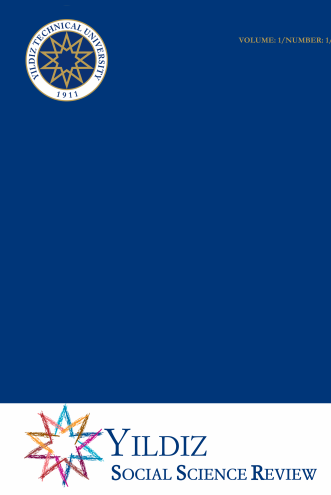An analysis of cruise tourism on Turkish economy; a case study for Istanbul and Barcelona ports
Considering the rising momentum of tourism, companies and countries plunged into a quest for alternative activities over the longstanding choices in order to match more complex options demanded by people as a result of the globalization and technological improvement. In response to this demand, tourism is diversied and expanded into new alternatives. Cruise industry is an oligopoly and a sub-branch of tourism industry with its both labour and capital abundant factors. According to the ocial numbers, cruise line destinations mainly concentrated on Caribbean's and Mediterranean whereas 9% of global cruisers passed from Turkey as Turkey responds to this with 21 active cruise harbours. Understanding the itineraries as well as destinations is important in order to maintain and prosper current place in global zone. In our study, we aim to analyse theindicators that boost the cruise industry by concentrating on the attractive factors in world's leading destinations in order to investigate the Turkey's current and possible future place in the industry.
Anahtar Kelimeler:
Tourism, Cruise Industry, Economic Impact, Current Account
___
- Chase, G., and I. Alon (2002): "Evaluating the economic impact of cruise tourism: a case study of Barbados," Anatolia, 13(1), 5-18.
- CLIA (2015): "Cruise Line International Association- Annual Reports," www.cruising.com.
- Corbridge, S. (1986): Capitalist world development: a critique of radical development geography. Rowman & Littlefield.
- Dowling, R. K. (2006): Cruise ship tourism. CABI.
- Durbarry, R. (2004): "Tourism and economic growth: the case of Mauritius," Tourism Economics, 10(4), 389-401.
- Dwyer, L., P. Forsyth, et al. (1996): "Economic impacts of cruise tourism in Australia," Journal of Tourism Studies, 7(2), 36.
- ISSN: 2149-4363
- Başlangıç: 2015
- Yayıncı: Yıldız Teknik Üniversitesi
Sayıdaki Diğer Makaleler
An analysis of cruise tourism on Turkish economy; a case study for Istanbul and Barcelona ports
Whatever it takes? The European Central Bank's Sovereign Debt Interventions in the Eurozone Crisis
Hizmetkâr Liderlik ile Örgütsel Bağlılık Arasındaki İlişki Üzerine Bir Çalışma
Innovative Approaches in Fashion Retailing
Şirin Gizem KÖSE, Arzu KARAMAN AKGÜL
